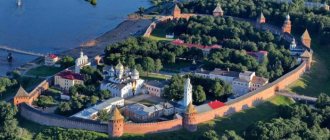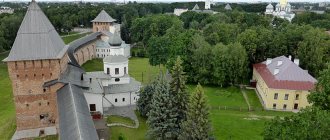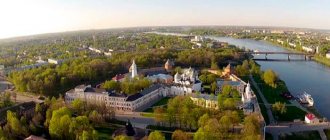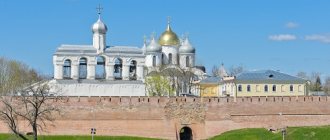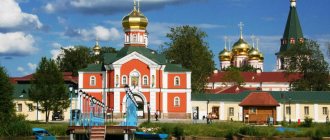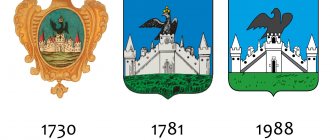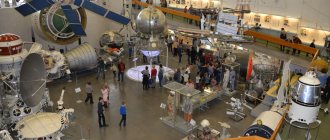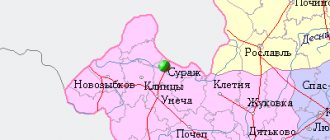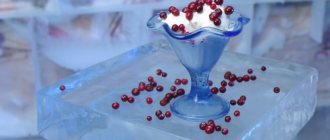Valdai
The Valdai region is located on the hill of the same name. These are the most picturesque places in the Novgorod region. Gentle slides replace one another here. Every time from the top of the next hill a magnificent view of pine forests, lakes, and rivers opens up. The air is filled with the smell of pine needles. These regions seem to be created for relaxation in the lap of nature. Here you invariably have a desire to hang out for a few days in a tent or at a camp site somewhere on the shore of a quiet forest lake.
Between the Volga and the Baltic
The administrative center of this picturesque area is the city of Valdai. It is located on the shores of Lake Valdai, 140 kilometers from Veliky Novgorod. Nearby there is a federal highway connecting Moscow and St. Petersburg. That is why at different times many famous people passed through the city - Pushkin, Nekrasov, Radishchev. Valdai is located on the 386th kilometer of the M-10 highway. The population of the city does not exceed 14 thousand people.
Valdai is the administrative center of the picturesque Valdai region
The Valdai Upland is part of the Russian Plain. The elevation changes range from 150 to 250 meters. The highest point is considered to be a mountain 346 meters high. The elevation plays the role of a watershed between the Volga and Baltic basins. It’s hard to believe, but such giant rivers as the Volga, Dnieper, Western Dvina, Msta, Tvertsa and others originate from here.
The top of the watershed, located at the highest point, is called “Top of Valdai”. In this place originate the Skomoroshka River, which belongs to the Caspian Sea basin, and three tributaries of the Tsna - the Krasenka, Karavay rivers and the Syutaevsky stream, which belong to the Baltic basin. The picturesque landscape of the area was formed by glaciers in ancient times.
Satan's Lair
Geographic coordinates: N 57° 52.115' E 33° 17.513' get here by personal transport: through Sovetsky Prospekt you get to Zimogorye, take the M10 highway towards St. Petersburg, after 4 kilometers turn left to the Valdai Dvor hotel. After driving 12 kilometers through the forest, turn left, after another 4 km, turn left again (focus on the power lines) - you will come across an abandoned military town, where your journey will begin.
For lovers of extreme sports and unusual entertainment, Valdai has reserved another amazing place. Satan's Lair is an abandoned missile base that was once home to the R-36M, the largest ballistic missile in the world. Today, only ruins remain from its former scale, but they look impressive. Here you can see missile silos and installations, command post buildings and huge hangars. The work of the base was stopped by a powerful explosion, but many buildings survived.
Lively place
The history of Valdai goes back more than five hundred years. Where Valdai Lake juts out into the land with the Tsynareva bow, in the second half of the 15th century there were two courtyards of the first inhabitants of Valdai - serfs Yakov Demekhov and his son Klim. Their names are preserved in a historical document where the word “Valdai” is mentioned for the first time. The lands and Valdai Selishche - that was the name of the village - were owned by the boyar Vasily Esifov.
The history of Valdai goes back more than 500 years
In the first half of the 16th century, a permanent summer road was built along the southern shore of Lake Valdai, which connected Moscow and Veliky Novgorod. The village began to grow rapidly. Soon there were 94 households. Dozens of brick and wooden forges were built on Kuznechnaya Square. They repaired carts, shoed horses, made sickles, scythes, axes, and ploughshares. Carts of merchants stopped at Gostiny Pole and fairs were held.
With the start of construction of St. Petersburg, the role of Valdai as a shopping center and service point for transit passengers increased even more. The Valdai merchants expanded their commercial operations to such an extent that they even managed to squeeze out the Novgorod merchants. Cargoes passed through Valdai from morning to evening. The signature craft of the Valdash - residents of Valdai - was baking bagels. They were sold not only in the city, but even on the Volga piers and in Siberia.
In 1746, the construction of a dirt-log road between Moscow and St. Petersburg was completed. In May 1770, by decree of Catherine II, the village of Valdai received city status. About two thousand people lived here then. The event was marked by the construction of the Catherine Church. At the end of the 18th century, bell foundry began in the city, which became the hallmark of Valdai.
The fate of the pilot Maresyev, who became the prototype of the main character of Boris Polevoy’s book “The Tale of a Real Man,” is connected with the Valdai region. Maresyev, wounded in the legs, was picked up in the forest in April 1942 and nursed by residents of the village of Plav before being sent to the hospital. And in the village of Krestovaya Yakov Pavlov, the legendary defender of Stalingrad, was born. Everyone knows “Pavlov’s House” in a city on the Volga, which was defended by a small group of fighters for 58 days and nights. After the war, until his death in 1981, Pavlov lived in Valdai.
Bell Museum
Bell Museum
Valdai district
Valdai is the bell center of Russia. For about five centuries, bells were cast here for large churches in Russia and other countries. A large museum dedicated to this craft is located in the traveling palace church of the Great Martyr Catherine. It was built in the 18th century according to the design of the architect Nikolai Lvov in honor of Empress Catherine II.
The museum houses ancient bells. One of the oldest exhibits was cast in 1536 in Pskov, the other belonged to Tsar Alexei Mikhailovich. In addition to domestic ones, bells from Sweden, Germany and other European countries are presented here. At the museum you can climb the bell tower and ring the bells.
They also talk about all the bell production in pre-revolutionary Russia and about famous bell makers. You will also find here answers to the questions: what is a raspberry ringing, what do banzhong, “yam accordion” and carillon have in common, what did the Russian road sound like a century and a half ago, and is the Novgorod veche bell still alive?
Milestones of history
Catherine's Church is one of the main attractions of Valdai. The temple was built in 1793 according to the design of the architect Lvov. It was supposed to serve as a traveling church during the passage of royalty from St. Petersburg to Moscow. For this reason, the church was built with government money, but it was maintained by donations.
Catherine's Church
Currently, the church building houses the Bell Museum. It opened in 1995. The exhibition is the first and unique collection of bells in Russia. Its peculiarity is that you can not only look at the exhibits in the museum, but also listen to them! Three belfries provide an opportunity to hear the bell ringing performed by museum staff, see its technique and bell-ringing techniques, and also try ringing it yourself.
Bells are the hallmark of Valdai
Next to the Catherine Church there is the chapel of Jacob Borovichsky. It was built in memory of Emperor Alexander I, whose body was in the church of St. Catherine during the funeral procession. For a long time it served as a roadside chapel.
Not far from the Catherine Church, pay attention to the ancient buildings of the city and district administration. The right corner building is the Travel Palace. The “highest persons” stayed there. The former mayor's house, court, treasury and city magistrate are also located here.
The city has preserved many ancient buildings
Many ancient buildings have been preserved around Freedom Square. On Narodnaya Street you can see merchant mansions. Once upon a time there was a settlement with inns, taverns and shops. On the square itself, attention is drawn to the building of the former Gostiny Dvor - in the past a noisy venue for fairs.
But the high-rise dominants of Freedom Square are the Church of the Entry of the Blessed Virgin Mary into the Temple of the Lord and the Trinity Cathedral. The square was previously called Trinity after the latter’s name. On the corner of the square and Lunacharsky Street there is a souvenir shop where you can buy not only typical Valdai souvenirs, but also antiques.
Trinity Cathedral
Trinity Cathedral was erected in 1744 in a magnificent Baroque style. In 1837, the future Emperor Alexander II, who was passing through the city, attended the festive service. The Church of the Entry of the Blessed Virgin Mary into the Temple is located not far from the cathedral. It was famous for two ancient icons - the Entry into the Temple of the Blessed Virgin Mary and St. Nicholas the Wonderworker.
Museum of the "County City"
The exhibition of the Museum of the county town tells about the history of the Valdai region. One of the departments is dedicated to the Iveron Monastery, the other to crafts. The products of bell-casters, wheelwrights, bar-makers, and soap-makers are presented here. The Valdai people have always been distinguished by their versatility. For example, a resident of the city A.Ya. Levikhin was at the same time a fire chief, a photographer and the owner of a printing house! One of the sections is dedicated to government institutions - here you can see things from the fire society, theater, pharmacy, and school.
Valdai Lake embankment
From Freedom Square you should definitely go down to the embankment of Valdai Lake - one of the most beautiful places in the city. Here you can sit on a bench and admire the Iversky Monastery. Often there are fishermen with fishing rods. In summer there is an opportunity to swim and sunbathe. Solovyovsky Park on the shore of Valdai Lake is a memory of the novelist Vsevolod Solovyov, the son of the famous historian S.M. Solovyova. On the street V.A. Kuzmin (formerly Kuznechnaya) the house where the writer lived has been preserved.
County town museum
County town museum
Valdai district
The museum of the county town of Valdai is located in a two-story mansion of the 19th century. At various times, the ancient building housed noble guardianship, the district congress of justices of the peace, military presence and other public institutions.
Most of the exhibition is dedicated to the period from the second half of the 18th century to the beginning of the 20th century - it was during this time that Valdai was a county town. Museum guests can see here the finds of archaeologists, materials on the history of the Iversky Monastery and the urban planning of Valdai in the 18th century. One of the halls is dedicated to craftsmen - masons, carpenters, brickmakers. The exhibition tells about the famous dynasties of bell casters - the Smirnovs, Stukolkins, Usachevs - as well as harmonica masters.
The museum also stores exhibits from government institutions and public organizations that were located here, as well as belongings of Valdai families. And the last exhibition hall is dedicated to “dacha residents” who came here to relax and be inspired. Among them are the artist and philosopher Nicholas Roerich, publicist for the newspaper “Novoye Vremya” Mikhail Menshikov, professor of political economy Pavel Georgievsky, writer Sergei Nilus.
Valdai monastery
Not far from Valdai is the Iversky Monastery, which is located on Selvitsky Island in Lake Valdai. The construction of the monastery was initiated by Patriarch Nikon in the summer of 1653. Tsar Alexei Mikhailovich transferred dozens of villages to the monastery, including the village of Valdai. The Iversky Monastery was one of the largest landowners - in 1764 it owned about 7 thousand serfs and 4 thousand acres of arable land.
At first the monastery had five churches - the Assumption Cathedral of the 17th century, the Epiphany Church, the Church of the Descent of the Holy Spirit, the Church of St. James of Borovichi, the Church of Archangel Michael and the Church of St. Philip, Metropolitan of Moscow. The monastery was surrounded by log fortress walls with ten towers. But then they were rebuilt, the walls became stone, and the number of towers was reduced to five. The total length of the walls was about a thousand meters!
Iversky Monastery
The monks, immigrants from Belarus, brought with them a printing house, which became the first in the Russian province. Craftsmen arrived from the Dnieper cities of Orsha, Kopys and Mstislavl and started producing stove tiles. The ceramic workshop existed for about fifty years. Residents of Novgorod, Tver, and Pskov bought stove lining. Tiles were also used to decorate monastery buildings. The founders of the tile production were Ignat Maksimov and the famous master Stepan Ivanov, nicknamed Polubes.
The oldest building that has survived to this day is the Assumption Cathedral, built in 1656. This is one of the largest cathedrals of the 17th century in Russia, and for that time its appearance had many unusual things - a circular gallery, wide windows, and octagonal “drums” under the domes. The refectory is interesting, the vaults of which rest on one central pillar, and the building of the cells is decorated with stone carvings. The Iveron Icon of the Mother of God, brought here from Athos, was kept in the cathedral.
View of the monastery from Valdai
After the revolution, the territory of the monastery at various times housed: a labor artel, a historical and archival museum, workshops, a local history museum, a home for the disabled of the Great Patriotic War and a forest school for children with tuberculosis. The island was distinguished by its picturesque nature, so the buildings were eventually adapted into a recreation center. Only in 1991 the monastery was returned to the Novgorod diocese. The restoration was completed in 2007.
Now the monastery operates a small museum, a pilgrimage center and a hotel. The island offers a picturesque view of the lake and the city of Valdai, but an even more beautiful view opens from the city embankment of Valdai to the island, where the churches of the Iversky Monastery shine with golden domes. “All this is beauty, vigorous beauty,” wrote Nicholas Roerich about this place.
Holy Spring Tekunok
Address: Lake Golova, on the opposite side of the lake from the village of Novotroitsy and the village of Dinner Opening hours: around the clock Website: valdaypark.ru Getting there: leave Valdai along the street. Peschanaya, turn right after the village of Stanki, drive 15 km. to the village of Dinner.
The Tekunok Spring is known for its healing properties. The spring water earned its fame due to the content of silver ions in its composition. The local spring is considered useful not only for the digestive system, but also for the treatment of eye diseases. More recently, a font was built at the source, as well as a consecrated chapel. People come here mainly for physical healing, but in these shrines one can also heal spiritually.
Valdai National Park
Valdai National Park is spread over three districts - Valdai, Okulovsky and Demyansky. There are more than two hundred lakes in the park! The most famous are Valdai, Seliger and Velye. In the forest you can meet hares, foxes and badgers. Larger animals include moose, bears and wild boars. There are representatives of the fauna listed in the Red Book - black stork, peregrine falcon, golden eagle, snake eagle and others.
On the territory of the park, archaeologists discovered burial mounds, ancient settlements, sites of ancient people - 82 objects in total. There are ancient estates with parks, as well as monuments of wooden architecture. The park is equipped with more than 60 tourist sites, where there is a fireplace, tables with canopies, and benches.
Valdai National Park
In the Valdai region there are many lakes and rivers where fish are found. For example, in Lake Valdai you can catch pike, bream, roach, carp, tench, perch and burbot. During the spawning period, fishing is allowed only with a float rod, outside the spawning areas, from the shore, or from a rowing boat! The use of gasoline boat engines on the lakes of the national park is prohibited. Since the Valdai region is a specially protected area, before going fishing, you need to visit the office of the Valdai National Park and obtain a permit.
Route
The tourist route around the city of Valdai is quite short - it can be completed in 1.5–2 hours. The route starts at the Trinity Cathedral and then follows Narodnaya Street. From Narodnaya Street it looks like this: the chapel of Jacob Borovichsky - a memorial sign in honor of the 500th anniversary of the founding of the city - the Church of Catherine II - the House of Culture - Komsomolsky Prospekt.
The second half of the day can be devoted to a visit to the Iversky Monastery on the island or a walk along one of the eco-trails of the Valdai National Park . Tourism is one of the main directions of development of the region. Therefore, there are a lot of leisure options here. You can rent a boat and go explore the waters of the lake. This is the most popular option for what to see in Valdai in 1 day in autumn or summer.
Valdai Lake Photo: © Sonic_off
How to get to Valdai
The easiest way to get from Moscow to Valdai is by rail. A direct train departs daily from Leningradsky Station and arrives at the local railway station on the outskirts of the city. Ticket prices vary from 800 RUB to 6500 RUB, and you will have to spend a little less than 6 hours on the road. Prices on the page are for March 2021.
The only drawback of this route is the time it takes for the train to arrive at its destination. He arrives at Valdai Station at 2:00, so it’s worth thinking about further actions in advance. Taxi drivers are always on duty at the station, and some recreation centers provide transfers for guests. All you need to do is arrange a night check-in in advance.
The most convenient way to get to Valdai from the Northern capital is by bus. Direct flights depart from the bus station to the embankment. Obvodny Canal and arrive at the local bus station. Tickets cost from 950 RUB, travel time is 6 hours. In the same time, you can get to the lake by train, making a change in Bologoe. You will have to spend from 1800 to 4500 RUB on tickets.
By private car, the journey from Moscow to Valdai will take about 5 hours, from St. Petersburg - a little more than 4. In the first case, you need to move along the Leningradskoye Highway towards Klin, Tver and Vyshny Volochok. In the area of the village of Zimogorye, we turn right and go onto Sovetsky Ave. Valdai. From the Northern capital you need to exit onto the Moskovskoe highway and follow the E105 highway. After the “Valdai” sign, turn left and exit onto Vasilyeva Ave.
Vvedenskaya Church
The current stone church, built in the 17th year on the city Trade Square in the form of two quadrangles, was originally wooden. As usual, it burned down and was restored in stone. Now the church is still not completely restored and not crowned with bell towers.
What to bring
Of course, the main souvenir of the city is the famous Valdai bells. Thanks to their unique shape, they emit that same crimson ringing that has made them famous throughout the world. The traditions of bell casting in Valdai go back centuries, when the best bells for churches and chapels were cast here. Today, these sonorous souvenirs have become a kind of calling card of these places.
Not long ago, another interesting souvenir appeared in Valdai. Guests are offered to purchase a token for travel in the non-existent Valdai metro. It is sold along with a diagram of a fictitious subway, on which the most remarkable places of the city are marked with station points.
In addition, from Valdai you can bring products made of birch bark, bone and wood - boxes, mirrors, plates and much more. The souvenir shops of the Iversky Monastery offer pilgrims and tourists very beautiful church utensils, books, icons and souvenirs.
Third day: December 16
Saturday morning greeted us with heavy snowfall. Overnight, the landscape outside the window changed dramatically. Fluffy snow and light frost replaced the slush and greyness. The mood skyrocketed! Ahead of us were the sights of the outskirts of Veliky Novgorod.
We quickly cleared the car from the snowdrift that had formed overnight and went to the village of Yurovo (5 km). On the way we filled the tank full. We moved slowly, the ice was felt under the snow, and the ABS was activated every time the brake was pressed. But there were almost no cars, it was early morning on a weekend - the city was still sleeping.
St. George's Monastery
We arrived at the monastery just before dawn. There is stunning nature and ringing silence all around! Crystal clear air! We never ceased to be amazed at how lucky we were with the weather that day. However, look at the photo from the series: it’s better to see than to hear.
We arrived early, there were no tourists yet. We walked a little around the monastery territory, everything was well maintained, the paths were cleaned, the caring hands of the monks and novices were visible.
In the very center is St. George's Cathedral (1119). It's very cold inside. Stone floor and walls, no heating, damp and somehow alarming. It was difficult for me to be there, the cold literally penetrated to the bones, and the twilight brought on heavy thoughts. I didn’t want to stay for long; we quickly looked at the paintings, bowed, lit candles and left. Despite its antiquity, this place left some kind of heavy impression.
On the way out we saw a monastery shop. We bought delicious pies, straight from the heat (30-40 rubles). They learned from the novice that it was more convenient to go to the Peryn monastery first, and to the village of architecture after that. The question of the order of these objects tormented me even at home. It’s difficult to understand from the map, and the reviews somehow don’t reflect this point. We followed the advice and went to look for the Perynsky monastery.
Perynsky monastery
The Peryn monastery is located next to the monastery. Of course, it’s a bit far on foot, but by car we drove no more than five minutes. It is located, as it were, on an island; an artificial embankment connects this place with the shore. It is 300 meters long, but very narrow. And in winter, given the track, it is difficult for cars to pass there. We were lucky, there was no oncoming traffic, and the parking lot in front of the gate was completely empty.
I won’t tell you the history of this place; there is a lot of this information on the Internet. Just look at the photo.
There is a chapel in the center. You can put candles there and write notes. Services are held here once a week on Saturdays. The decor is simple, the atmosphere is homely, there is no pretentiousness of the central iconic places. Everything is simple and cozy.
I would like to add that all buildings are heated with wood. No civilization and very beautiful surroundings. The entrance is free.
Village of architecture "Vitoslavice"
But the village of architecture disappointed me. Reconstruction is in full swing there and there is almost nothing to see.
It took 10 minutes to get there. We parked at the Yuryevskoye Compound hotel. It is located opposite. It's more lively here. In front of the entrance there are many shops “for tourists” with souvenirs and clothes.
The Museum of Folk Wooden Architecture "Vitoslavice" is open from 10.00 to 17.00, the ticket office is open until 16.40. Entrance tickets: 150 rub. – adults, 100 rub. - students.
Note! Due to the reconstruction, there was no light in the entire complex for two weeks and no one from the administration gave any comforting forecasts on this matter. You won't be able to see the inside of the houses even during the daytime. The windows there are small, almost no light comes through, and flashlights don’t help.
50% of the objects are tightly closed with a high iron fence. Some are fenced off with red tape. The feeling is unpleasant, you walk as if on a construction site. In my opinion, it would be better to close the attraction altogether during renovations. There's almost nothing to see there now.
In general, to say that I was upset is to say nothing. I was saddened to tears, because these kinds of attractions are among my favorite ones. I will never forget the impressions that the village of architecture in Kostroma made on me during a tour of the Golden Ring. I hope that you, dear readers, will have better luck, but for me this is a reason to come back here again.
There is a small canvas café on the village grounds. You won't be able to have a proper meal there, but you can have a snack and drink hot tea.
By that time we were very hungry, so we went to the Yuryevskoye Podvorye restaurant; we really wanted some hot soup. Prices: a bowl of soup 250-300 rubles, hot dishes from 550 rubles. The interior is interesting.
The next point on the plan was to be the Staraya Russa resort. But due to the fact that it was already approaching lunch, the city is not close, and we need to return to Veliky Novgorod at least by six (we bought theater tickets), we decided to cancel the trip.
The freed time was devoted to visiting two more monasteries in the vicinity of Veliky Novgorod.
Holy Trinity Michael-Klopsky Monastery
This monastery is located 15 km from Veliky Novgorod along the Pskov highway. We didn’t know the exact address, so we typed the name of the monastery into the navigator and trusted fate. The gadget did not disappoint.
Already on the Pskov highway we noticed a sign to the monastery. The road is literally “in the field”. It is poorly cleaned, there are potholes upon potholes, but you can drive through even in a passenger car. We moved for six kilometers at a speed of 10-15 km/h, not a soul around, snow-covered fields on both sides.
We entered a village and domes appeared on the outskirts. I have never seen a more neglected and abandoned monastery; it’s amazing how, with such devastation, it is considered active?
There are no usual monastery walls there. A skewed fence, a poster and a change house at the entrance.
In the center is the Temple. Everything inside is scaffolded, apparently there were attempts to start reconstruction, but obviously there were no funds and the work was stuck without starting. It's a pity. The magnificent wall paintings show the grandeur of this place in ancient times.
The buildings next door are in even worse condition.
A small wooden Church was built on the territory, the only place where rare services are currently held.
In the monastery we met only one novice and talked with the priest, whom we found in the same hut at the entrance to the monastery.
I would like to hope that funds will still be found for the reconstruction of the monastery and that work will continue.
Is it worth going here? Depends on your preferences. I like to visit hard-to-reach, non-touristy places. If you share my passions, then you will like this monastery.
Nikolo-Vyazhishchi Monastery
It took about 40 minutes to get to the Nikolo-Vyazhishchi Monastery. It is located 30 minutes from Veliky Novgorod in the village of Vyazhishche, on the other side of the city. The navigator took a detour. The road was unpleasant, there was slush with ice under the wheels, although there were few cars.
This monastery is the complete opposite of the previous one, well-groomed and more pretentious or something. Already at the entrance to the village there is a stunning view of snow-white tall buildings and shiny domes.
The walls of the Cathedral are crowned with magnificent mosaics, which distinguishes the monastery from others.
The architecture of the complex of buildings reminded me of the Rostov Kremlin. The same powerful transitions between buildings, solid white stone stairs, the shape of the windows. A very interesting place, I recommend visiting it.
It was not possible to get inside the Temple immediately. At 16.00 it was closed. But when we walked around the territory they noticed us. Father opened the Temple, allowed us to bow and light candles. He told me a little about the life of the monastery.
Drama Theater: play Deceivers
We returned to Veliky Novgorod around 6 pm. An hour was enough for us to change clothes and rest. We purchased tickets to the theater immediately upon arrival. I really wanted to see a performance by a local troupe. On December 16, the comedy “Deceivers” was on for the second day, the hall was full. Obviously, the residents of Veliky Novgorod enjoy the cultural life of their city. And that's great!
Much has been written about the history of the theater building itself; from the outside it made a depressing impression on me. Everything inside is quite modern, although of course there is no escape from the architecture of the second half of the 20th century.
The performance itself left me indifferent. I can only say that it seemed to me that the actors were overacting. And I didn’t like the plot itself, maybe that’s the whole point. I apologize in advance to theatergoers for such a biased opinion; I very rarely go to theaters and I’m unlikely to be able to professionally assess the level of performance.
The girls were happy. True, Natalya has already seen this performance on the Moscow stage. Her opinion was not so categorical, but she also spoke about a more modest execution of the plot by the local troupe.
In any case, we did not regret going to the theater; the mood was wonderful. We returned to the hotel satisfied. A difficult day lay ahead of us. Still, we decided to visit Staraya Russa on the way to Valdai. To do this, we needed to make a huge detour, but we wanted to complete the program in full. Therefore, we had dinner in our room and went to bed early, expecting to get up at six in the morning.
Recommendations for followers
Oddly enough, given the poor preparation for the trip this time, I don’t have any special complaints or corrections after the fact. I have already given several recommendations in the first part of the report, here are some more tips for the route:
- If you want to see more in Veliky Novgorod, or “don’t rush” to get acquainted with the local attractions of the city and surrounding area, then add at least one more day to your trip. Ideally, you need to set aside at least three days to study everything interesting. Two to Veliky Novgorod itself, and one to interesting places in the surrounding area.
- If you are very limited in time, you don’t have to go to Staraya Russa. The town certainly deserves attention, but no more than any other provincial town in Russia. This step will allow you to spend an extra half a day in Veliky Novgorod, or enjoy the magnificent nature of Valdai longer. Still, Staraya Russa is quite a big detour on our route.
- Buy food in shops at monasteries. If you have accommodation with a kitchen, this is a good food option. Their products (dumplings, dumplings, eggs, sour cream, twists) will allow you to eat nourishingly and tasty. And the cost is no more expensive than chain stores.
Iversky Monastery
The Iversky Monastery belongs to the Orthodox faith and is male. After the troubled times of Rus', this monastery was the very first to be built. The construction dates back to 1653, when small wooden churches were erected on the site of the current building under the leadership of Patriarch Nikon.
The monastery is located on the coast of Lake Valdai in a picturesque natural area, and on its territory are the relics of St. John of Borovichi, and here, in a small chapel in the garden, the Panayev family tomb is founded. The monastery complex also includes a building of fraternal cells, built on 2 floors in the Moscow Baroque style. For a long time, the Iversky Monastery possessed untold wealth, but this era ended with the fall of the tsarist regime.
Quite an interesting video about a road trip around Valdai and its environs:
If you have not yet chosen where you will live and want to save money when booking, we recommend using the RoomGuru service. Firstly, it contains hotels, apartments and guest houses from many different booking systems, so you won’t miss out on a worthwhile option. Secondly, you can immediately compare prices for one place in different services and book where it is cheaper (this is not always Booking!).
How much did you spend?
Initially we planned a budget trip. From the series: nothing superfluous, the less the better.
The numbers indicate only myself. I also took into account that the cost of the road there (1900 rubles for petrol + 750 rubles for tolls) was divided into two, and gasoline on the spot and on the way back - for three (1000 rubles for petrol there + 2150 rubles for additional costs + 750 RUR road fee). The cost of housing was simply divided by three. We ate mostly at home. Having summed up the receipts from the grocery store and rare cafes, I received the total amount for food.
- Road – 2625 rub.
- Housing – 3950 rub.
- Entrance tickets, excursions and theater - 2140 rubles.
- Meals – 2715 rub.
- Fine – 400 rubles. : for three = 135 rub.
Total: 11575 rub.
I didn't buy any souvenirs. The only thing I didn’t take into account in the final figure was notes and donations in Temples. But this is a personal expense item. And without them, the trip cost about 12,000 rubles. That's roughly what I originally planned to spend.


